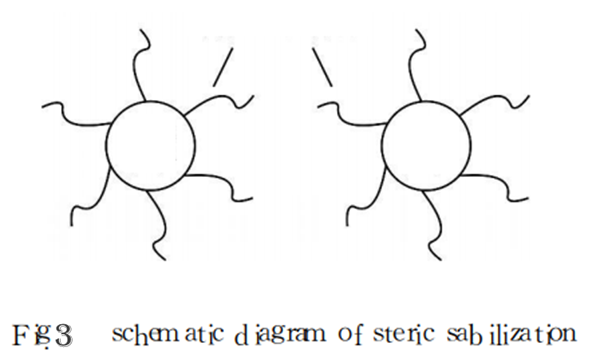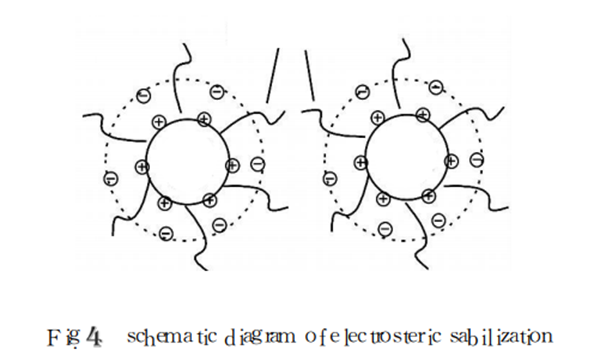- Home
- Products
- Elementary
- Boride Powder
- 3D Printing Powder
- Sulfide Powder
- Oxide Powder
- Carbide powder
- Nitride Powder
- Silicide Powder
- Hydride Powder
- Telluride Powder
- Selenide Powder
- Stearic Acid Series
- Phosphide Powder
- Nanoparticles
- Metal Alloy
- MAX Phase
- Lithium Battery Anode
- Surfactant
- Molecular sieves
- Concrete Admixtures
- News
- Answers
- Contact
- About
How to improve nanoparticles to make them more superior nanomaterials
Heap of nanoparticles
The agglomeration of nanoparticles can be separated right into two kinds: soft load as well as hard agglomeration. Soft pile is primarily triggered by the electrostatic force between bits and van der Waals pressure. Because of the weak force, soft agglomeration can pass some chemical techniques.
The law or the application of mechanical energy to get rid of; the formation of hard cluster in addition to electrostatic forces as well as van der Waals pressures, there are chemical bonds, so tough agglomerates are not easy to destroy, need to take some unique approaches to control.
 < img src="// ueeshop.ly200-cdn. com/u _ file/UPAI/UPAI779
/ 1907/photo/1661a376e4. png"/ > Schematic layout of pile of nanoparticles Dispersion of nanoparticles Among the methods to stop the development of high-density, hard-block precipitates of nanoparticles is to minimize van der Waals tourist attraction or communication in between groups, to make sure that the key fragments are not conveniently agglomerated to develop second particles, therefore avoiding more inter-atomic bonding. This causes the formation of high-density, hard-blocked precipitates. The anti-agglomeration device of nanoparticles is split right into: (1) electrostatic stablizing (DLVO theory); (2) steric stabilization; (3) electrostatic steric stablizing.
Nanoparticle dispersion theory Electrostatic stabilization device (DLVO concept)
The electrostatic stabilization device, additionally understood as the electrical dual layer stabilization device, forms an electrical dual layer by changing the pH value to produce a specific amount of surface fee externally of the bit. The destination between the fragments is greatly lowered by the repulsive pressure between the electrical double layers, thus realizing the dispersion of the nanoparticles. The mechanism is shown as revealed in Figure 2.
< img src="// ueeshop.ly200-cdn. com/u _ file/UPAI/UPAI779
/ 1907/photo/1661a376e4. png"/ > Schematic layout of pile of nanoparticles Dispersion of nanoparticles Among the methods to stop the development of high-density, hard-block precipitates of nanoparticles is to minimize van der Waals tourist attraction or communication in between groups, to make sure that the key fragments are not conveniently agglomerated to develop second particles, therefore avoiding more inter-atomic bonding. This causes the formation of high-density, hard-blocked precipitates. The anti-agglomeration device of nanoparticles is split right into: (1) electrostatic stablizing (DLVO theory); (2) steric stabilization; (3) electrostatic steric stablizing.
Nanoparticle dispersion theory Electrostatic stabilization device (DLVO concept)
The electrostatic stabilization device, additionally understood as the electrical dual layer stabilization device, forms an electrical dual layer by changing the pH value to produce a specific amount of surface fee externally of the bit. The destination between the fragments is greatly lowered by the repulsive pressure between the electrical double layers, thus realizing the dispersion of the nanoparticles. The mechanism is shown as revealed in Figure 2.

- < img src="// ueeshop.ly200-cdn. com/u _ file/UPAI/UPAI779/ 1907/photo/38c1a5ba33. png"/ > Stochastic stabilization device The steric stablizing device is to include a specific quantity of uncharged polymer compound to the suspension to adsorb it around the nanoparticles to develop a microcell state, which causes repulsion between the particles, thereby attaining the objective of diffusion. The system representation is displayed in Number 4.
- Electrostatic steric stablizing system
The pH worth of the polyelectrolyte maximizes the dissociation degree of the polyelectrolyte, so that the polyelectrolyte externally of the fragment gets to the saturated adsorption, as well as both with each other work to evenly spread the nanoparticles. The mechanism diagram is displayed in Figure 3.
 < img src="// ueeshop.ly200-cdn.
com/u _ file/UPAI/UPAI779/ 1907/photo/ed7d9c96f4. png"/ > Nanoparticle dispersion technique The dispersion of nanoparticles in the medium is usually split into 3 stages: 1 fluid moistening the solid bits; 2 distributing the bigger accumulations right into smaller fragments by outside force; 3 maintaining the dispersed particles, guaranteeing that the powder fragments remain in the fluid The phase stays uniformly distributed for a lengthy period of time to stop the dispersed bits from re-aggregating. According to different dispersion mechanisms, it can be divided into mechanical activity technique and also surface adjustment technique.
< img src="// ueeshop.ly200-cdn.
com/u _ file/UPAI/UPAI779/ 1907/photo/ed7d9c96f4. png"/ > Nanoparticle dispersion technique The dispersion of nanoparticles in the medium is usually split into 3 stages: 1 fluid moistening the solid bits; 2 distributing the bigger accumulations right into smaller fragments by outside force; 3 maintaining the dispersed particles, guaranteeing that the powder fragments remain in the fluid The phase stays uniformly distributed for a lengthy period of time to stop the dispersed bits from re-aggregating. According to different dispersion mechanisms, it can be divided into mechanical activity technique and also surface adjustment technique.
- Mechanical activity
- Surface modification
- Surface area adjustment of nanoparticles by not natural materials
- Surface modification of nanoparticles by natural matter
 < img src ="// ueeshop.ly200-cdn.
com/u _ file/UPAI/UPAI779/ 1907/photo/c845513ec8. png"/ > conclusion The surface area alteration innovation of nanoparticles is an edge technique very closely related to numerous other techniques, including colloidal chemistry, natural chemistry, crystallography, nanomaterials, contemporary instrument evaluation as well as screening. The surface area finishing alteration modern technology has actually been commonly used in the surface adjustment of nanometers, and the research results in this location likewise show that the surface area coating modern technology has an excellent development prospect. Nonetheless, the adjustment device, alteration approach and equipment, and also the alteration impact characterization are still not best. Often times, the issue can not be addressed basically, and also additional research is quickly needed. As a result of the substantial changes in the physical and chemical buildings of the surface-treated particles, the development of nano surface area adjustment modern technology is thought about an essential ways of generating brand-new products in the future. With the continual study and also understanding of nano-particles, as well as better exploration of the surface adjustment of nano-powders, nano-technology will absolutely exert prospective power in various fields as well as will create a good society. Advantages and also financial benefits.
< img src ="// ueeshop.ly200-cdn.
com/u _ file/UPAI/UPAI779/ 1907/photo/c845513ec8. png"/ > conclusion The surface area alteration innovation of nanoparticles is an edge technique very closely related to numerous other techniques, including colloidal chemistry, natural chemistry, crystallography, nanomaterials, contemporary instrument evaluation as well as screening. The surface area finishing alteration modern technology has actually been commonly used in the surface adjustment of nanometers, and the research results in this location likewise show that the surface area coating modern technology has an excellent development prospect. Nonetheless, the adjustment device, alteration approach and equipment, and also the alteration impact characterization are still not best. Often times, the issue can not be addressed basically, and also additional research is quickly needed. As a result of the substantial changes in the physical and chemical buildings of the surface-treated particles, the development of nano surface area adjustment modern technology is thought about an essential ways of generating brand-new products in the future. With the continual study and also understanding of nano-particles, as well as better exploration of the surface adjustment of nano-powders, nano-technology will absolutely exert prospective power in various fields as well as will create a good society. Advantages and also financial benefits.
Luoyang Technology Co., Ltd is a professional Zinc Nanoparticles producer with over 12 years experience in chemical items r & d. If you are searching for premium quality Zinc Nanoparticles, please feel complimentary to call us and send an inquiry.
Inquiry us
PREVIOUS NEWS
The role of redispersible latex powder in mortar
NEXT NEWS
 < img src="// ueeshop.ly200-cdn.
com/u _ file/UPAI/UPAI779/ 1907/photo/ed7d9c96f4. png"/ > Nanoparticle dispersion technique The dispersion of nanoparticles in the medium is usually split into 3 stages: 1 fluid moistening the solid bits; 2 distributing the bigger accumulations right into smaller fragments by outside force; 3 maintaining the dispersed particles, guaranteeing that the powder fragments remain in the fluid The phase stays uniformly distributed for a lengthy period of time to stop the dispersed bits from re-aggregating. According to different dispersion mechanisms, it can be divided into mechanical activity technique and also surface adjustment technique.
< img src="// ueeshop.ly200-cdn.
com/u _ file/UPAI/UPAI779/ 1907/photo/ed7d9c96f4. png"/ > Nanoparticle dispersion technique The dispersion of nanoparticles in the medium is usually split into 3 stages: 1 fluid moistening the solid bits; 2 distributing the bigger accumulations right into smaller fragments by outside force; 3 maintaining the dispersed particles, guaranteeing that the powder fragments remain in the fluid The phase stays uniformly distributed for a lengthy period of time to stop the dispersed bits from re-aggregating. According to different dispersion mechanisms, it can be divided into mechanical activity technique and also surface adjustment technique.
 < img src ="// ueeshop.ly200-cdn.
com/u _ file/UPAI/UPAI779/ 1907/photo/c845513ec8. png"/ > conclusion The surface area alteration innovation of nanoparticles is an edge technique very closely related to numerous other techniques, including colloidal chemistry, natural chemistry, crystallography, nanomaterials, contemporary instrument evaluation as well as screening. The surface area finishing alteration modern technology has actually been commonly used in the surface adjustment of nanometers, and the research results in this location likewise show that the surface area coating modern technology has an excellent development prospect. Nonetheless, the adjustment device, alteration approach and equipment, and also the alteration impact characterization are still not best. Often times, the issue can not be addressed basically, and also additional research is quickly needed. As a result of the substantial changes in the physical and chemical buildings of the surface-treated particles, the development of nano surface area adjustment modern technology is thought about an essential ways of generating brand-new products in the future. With the continual study and also understanding of nano-particles, as well as better exploration of the surface adjustment of nano-powders, nano-technology will absolutely exert prospective power in various fields as well as will create a good society. Advantages and also financial benefits.
< img src ="// ueeshop.ly200-cdn.
com/u _ file/UPAI/UPAI779/ 1907/photo/c845513ec8. png"/ > conclusion The surface area alteration innovation of nanoparticles is an edge technique very closely related to numerous other techniques, including colloidal chemistry, natural chemistry, crystallography, nanomaterials, contemporary instrument evaluation as well as screening. The surface area finishing alteration modern technology has actually been commonly used in the surface adjustment of nanometers, and the research results in this location likewise show that the surface area coating modern technology has an excellent development prospect. Nonetheless, the adjustment device, alteration approach and equipment, and also the alteration impact characterization are still not best. Often times, the issue can not be addressed basically, and also additional research is quickly needed. As a result of the substantial changes in the physical and chemical buildings of the surface-treated particles, the development of nano surface area adjustment modern technology is thought about an essential ways of generating brand-new products in the future. With the continual study and also understanding of nano-particles, as well as better exploration of the surface adjustment of nano-powders, nano-technology will absolutely exert prospective power in various fields as well as will create a good society. Advantages and also financial benefits.